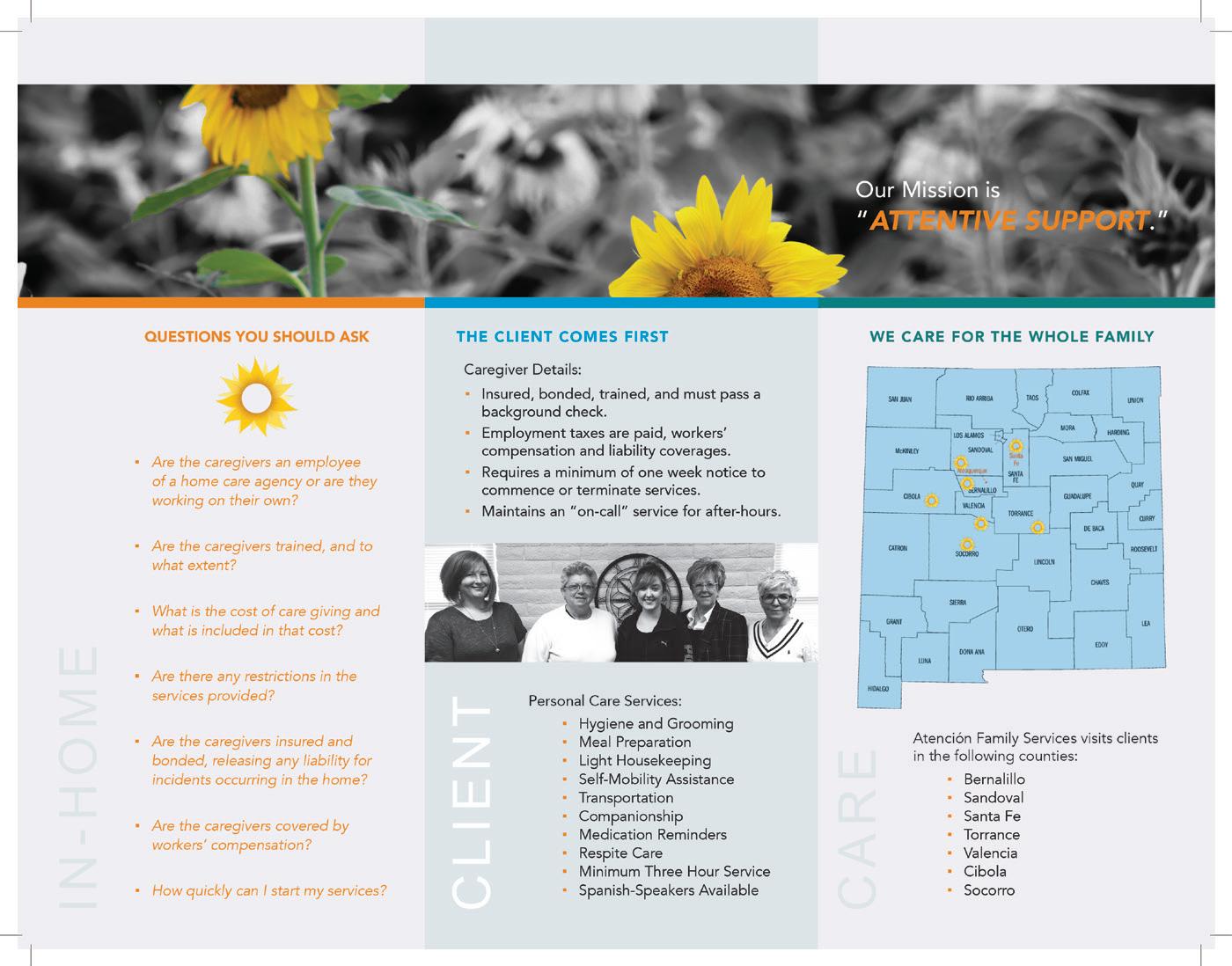
15 minute read
Award Winning Photojournalist To Display Images “My Side Of Starlight
Table of Contents
FEATURES
Advertisement
3
11
Award Winning Photojournalist To Display Images “My Side Of Starlight” Where To Get Free Tax Assistance
COLUMNS
8 12
14 15
Shannon Wagers Prescription For A Better Life – Dr. Barry Ramo The Doc Is In – Dr. Muraida Herb Doc
EVERY MONTH
10 11 Classifieds Crossword


Sni gnivil roines ee .thgil wen elohw aSni gnivil roines ee tnerruc tuoba erom nrael oT gnivil roines ruo ni sgninepo .thgil wen elohw a .6126-652 )505( llac ,ytinummoc tnerruc tuoba erom nrael oT .emoclew era sfeileb ro shtiaf llA gnivil roines ruo ni sgninepo .6126-652 )505( llac ,ytinummoc
Albuquerque will be the home for a premier exhibit of a series of famed photographs taken by local semiretired international award-winning photojournalist Michael Jacobs. Professionally covering assignments on every continent for more than 50 years, his images from his 3 decades in Hollywood will be displayed at OT Circus Gallery, 718 Central SW. Mr. Jacobs will be present at the opening night event on March 5, 2021 between 5-8:30pm.
London-born Mr. Jacobs has been at the forefront in his field as a photojournalist and award-winning film director. With his comprehensive body of work, he has been called one of “the eyewitnesses of late 20th century visual history of Hollywood art, culture and fame.” He has well-earned respect globally from eminent marketing firms, entertainment executives, celebrities themselves, the literati, religious leaders, Royalty, and the political. His Tinseltown trek allowed him a level of proximity that other photographers only dreamt about. He was never a paparazzi and most of his work was exclusive. Referring to his images and unique style, “Entertainment Tonight” dubbed Mr. Jacobs “the most articulate photographer in Hollywood.” His work has also been in worldwide magazines and newspapers, visual media, books and in celebrity collections.
After becoming an American citizen to enlist in the U.S. Navy, Petty Officer 2nd Class Jacobs served with Combat Camera Group during Vietnam. As an educator for more than 40 years he taught photography at various institutions both foreign and domestic, including USC and UCLA.
The exhibition includes both color and B&W images of notables such as Queen Elizabeth, Presidents Reagan and Clinton, Elton John, Ray Charles, Mohammed Ali, John Belushi, Liz Taylor, Michael Jackson, Madonna and 3 Beatles.
The exhibit will be open on March 20th (4-8pm) and on the closing night of March 25th (6-8pm), and in-between by appointment only by calling Jennifer DeSantis on (505) 415-4643.
©1991 Michael Jacobs/MJP

Ask A Health Care Professional
Wei-Ann Bay, M.D., Chief Medical Officer, Blue Cross and Blue Shield of New Mexico
One out of three people in the United States develops shingles in their lifetime. The incidence rate and complications from shingles are much higher in older adults. The data shows that the rate of older adults getting shingles is also rising, but unfortunately only one in five people are getting vaccinated.
What is shingles?
Shingles is also known as herpes zoster. The disease is caused by the varicella-zoster virus. This is the same virus that causes childhood chickenpox. Many of you may remember having chickenpox as a child (most people born before 1980 have had chickenpox). After the chickenpox infection resolves, the virus continues to live in your body and in the nerve cells, usually remaining inactive. In fact, many adults live with the virus in their body for many years and may never get shingles. However, if the virus becomes reactivated it results in shingles. Most people will get shingles only once in a lifetime, but it is possible to get shingles more than once.
What are the symptoms of shingles?
Shingles produces a blistery, painful rash. The pain can be mild or severe. Unlike chickenpox where most of the body is covered by a blistery rash, shingles develops only on one side of the body, usually in a single area of the body called a dermatome. A dermatome is an area of the skin that is supplied by a single nerve. The early signs of shingles may be burning, tingling or numbness of the skin. The skin may be itchy early on and then become sensitive to touch. Some will feel sick, feverish or have a headache. The rash usually appears one to two days later. After three to four days the blisters become ulcers, and within seven to10 days the rash should scab over and heal. The most common place to get shingles is in the band of skin that goes around one side of the waistline. Other common areas include the chest and the back. However, shingles can affect any part of the body, even the face. Shingles on the face is especially dangerous because when it is around the eye, it can affect the vision if not treated quickly.
What are the risk factors for getting shingles?
Anyone who has had chickenpox is at risk of getting shingles. Increasing age is another risk factor. Shingles can happen in healthy adults; however, some people are at higher risk of developing shingles because of a weakened immune system. The immune system can be weakened by cancer or other diseases that interfere with the body’s normal immune system. The

(continued on next page)
SAVE NOW – AND FOR THE FUTURE – WITH A 529 PLAN
Investing in a 529 account from The Education Plan is a wise choice for your child’s future. It’s also a smart decision thanks to tax savings that can benefit you today. New Mexico residents may benefit from a state income tax deduction for the full amount of any contributions to the Plan for the year in which the contributions are made. A 529 also offers tax-free growth and tax-free withdrawals if the money is used for qualified education expenses like tuition and fees, room and board, books and computers. Start saving for future higher education with The Education Plan, New Mexico’s state-sponsored 529 plan.

TheEducationPlan.com | 877.337.5268
For more information about The Education Plan, call 1.877.337.5268 or visit theeducationplan.com to obtain a Plan Description and Participation Agreement, which includes investment objectives, risks, charges, expenses, and other important information; read and consider it carefully before investing. The Education Plan® and The Education Plan® Logo are registered trademarks of The Education Trust Board of New Mexico used under license. TEP.0032.PT.0221
Prime Time Publishing, LLC
Home of Prime Time Monthly News Family Caregivers Resource Guide 50+ EXPO
Publisher/Editor David C. Rivord primetime@swcp.com Sr. Advertising Executive Joe A. Herrera primesales@swcp.com Art Director Ashley Conner primeart@swcp.com Graphic Designer/ House Photographer Dana Benjamin Copy Editor Autumn Gray Calendar Editor Liz Otero Contributing Writers Dr. Wei-Ann Bay Autumn Gray Jim Miller Dr. Gerard Muraida Liz Otero Dr. Barry Ramo Dr. Shellie Rosen Shannon Wagers
Get news and see event pictures on our new Facebook page at facebook.com/primetimepublishing!
Visit us at ptpubco.com
P.O. Box 67560 Albuquerque, NM 87193 505.880.0470
The Publisher does not take responsibility for the accuracy or legitimacy of the advertiser’s message or that of the guest writer/columnists or any aspect of the business operation or conduct of the advertisers in the paper.
Ask A Health Care Professional Cont.
(continued from previous page)
immune system can be weakened by medications that lower one’s immune response, such as drugs used to treat cancer, drugs used to treat auto-immune disease (e.g., rheumatoid arthritis), or drugs used after having a transplant.
How is shingles treated?
If you think you have shingles, call your health care provider right away. The sooner treatment is started the better the outcome and less likelihood of developing complications. Treatment includes anti-viral medication (e.g., acyclovir, valacyclovir or famciclovir) and sometimes steroids. Other things to do include getting plenty of rest, avoiding stress, wearing loose fitting clothes, avoiding touching or scratching the blisters, and keeping the affected area clean.
What are the complications of shingles?
While most people recover without problems there are some complications to be aware of: • Post-herpetic neuralgia is pain that can last for months after the onset of a shingles rash. It is usually described as a burning pain. This is the most common complication, affecting 10-15% of people and up to half of those 60 years and older. The pain can be serious enough to affect activities of daily living. Anti-seizure and anti-depressant medications as well as topical and oral pain medications can be effective treatment. • Skin infections can occur if the rash and ulcers become infected by bacteria from the skin. Antibiotics may be needed. • Eye complications can occur in 2% of people with shingles. If shingles affects the skin around the eye, the inflammation can cause damage to the back of the eye, called the retina, and lead to loss of vision. • Ear inflammation can develop when shingles affects the area around the ear. This can lead to nerve damage resulting in weakness in the facial muscles and ear pain. A steroid may be indicated along with the anti-viral medication.
How can I protect myself from shingles?
Getting the shingles vaccine is the best form of protection. The vaccine is indicated for adults 50 years of age or older. The Centers for Disease Control and Prevention recommends Shingrix. It is over 90% effective and requires two doses. Vaccine side effects are usually mild. Please talk to your health care provider about getting protected from shingles.
If you have a health question that you would like to be considered in Ask a Health Care Professional, please email AskHealthcareProfessional@ bcsbsnm.com. BCBSNM will select questions that may appear. Questions will not be personally answered. The opinions expressed in this column are solely those of the author and not necessarily those of BCBSNM. This column is not intended to be a substitute for professional medical care.
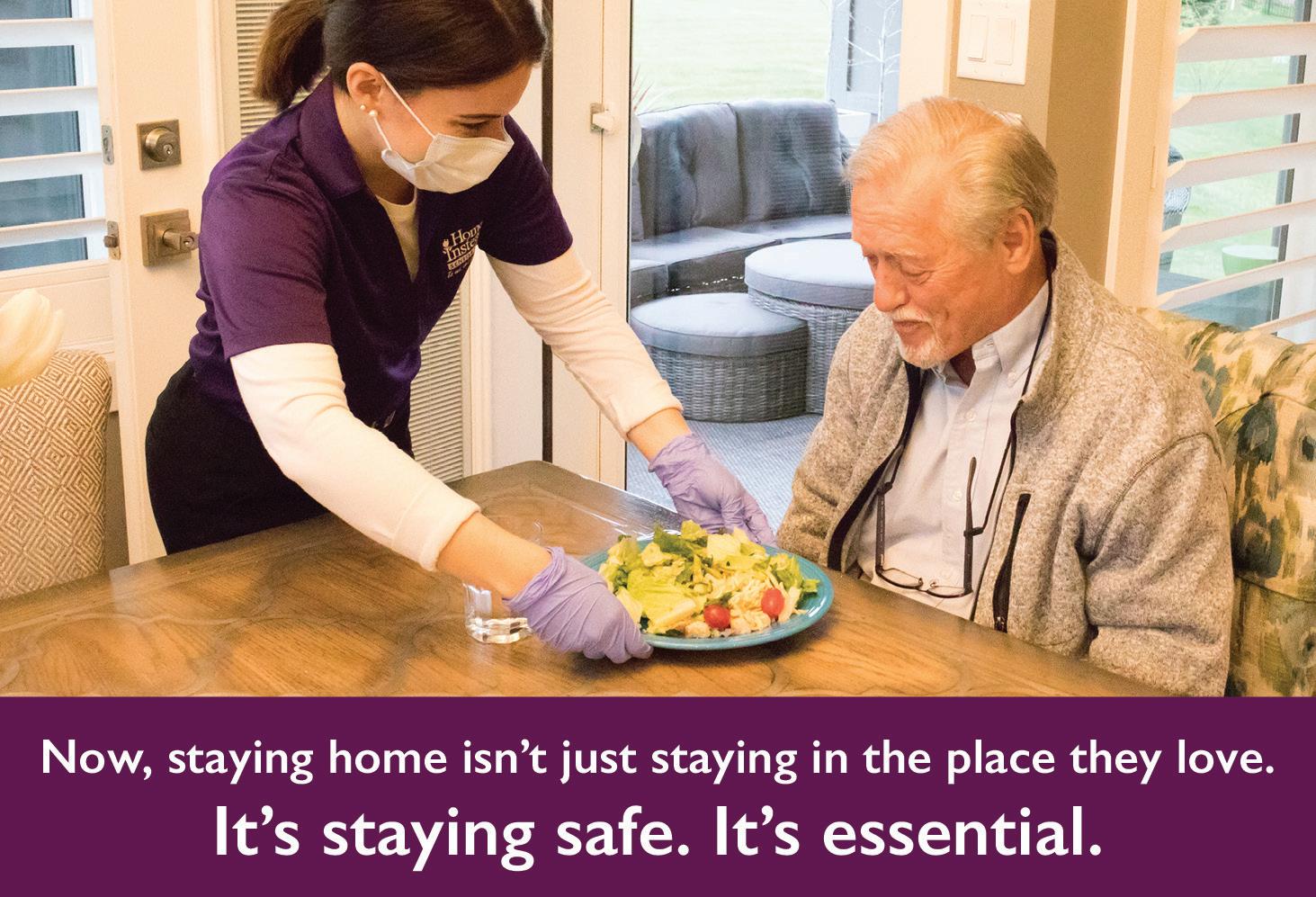


NMSU Study: Covid-19 Causing ‘Pandemic Within A Pandemic’
By Autumn Gray
As more people contract the novel coronavirus, more stories are emerging about sustained and difficult recovery periods for some of its victims. They report experiencing persistent or recurring long-term health effects that include hallucinations, fever, lethargy, depression and anxiety, and neurological problems lasting weeks or months. Though rare, these incidents receive attention because they are highly visible, unusual, and are a direct and immediate result of the largely misunderstood illness. However, there is a less visible and more widespread pandemic-induced health concern looming.
NMSU Professor Jagdish Khubchandani
A recent study shows that at least one-third of the American population will suffer longterm, if not permanent, adverse health effects associated with the pandemic - whether or not they ever contracted COVID-19. However, the evidence of this impact may not appear for many years. New Mexico State University professor Jagdish Khubchandani was the lead author of the study, titled “Covid-19 Pandemic, Stress, and Eating Practices in the United States.” The findings, which comprise the first and largest national study on pandemic-related stress and eating habits in the nation, were published in September in the European Journal of Investigation in Health, Psychology, and Education.
The study surveyed 838 random adults nationwide about their pandemic-related stress and dietary habits. It found that one-third of people improved their eating habits and wellness practices; one-third remained about the same; and onethird exhibited worsening patterns of behavior.
That last third is cause for serious concern, said Khubchandani, who brings almost 20 years of experience in medicine and higher education to NMSU, where he teaches public health evaluation.
“It’s a pandemic within a pandemic,” he said. “Poor eating habits during Covid will manifest as heart disease and cancer and stroke in the next decade or even sooner.
“We have people sitting at home with worsening diets and mental health, and that will have a longterm impact, which will manifest in (decreased) life expectancy,” Khubchandani said.
Impact on Life Expectancy
Pre-pandemic, American life expectancy was already on the decline and ranked among the lowest of developed countries, even though we as a country spend far more on health than our counterparts, according to ourworldindata.org. Until 2020, causes had been largely preventable, including drug overdoses (the biggest culprit), gun violence, obesity, and economic inequality.
Covid-19 accelerated the drop. In just the first half of 2020, U.S. life expectancy fell by a full year, from 78.8 to 77.8, the largest drop since World War II and the lowest level since 2006, according to a federal report released in mid-February.
Since Covid-19 impacted people of color harder than whites, many minorities who died from the virus were also more likely to be younger. Dr. Mary T. Bassett, a professor of health and human rights at Harvard University, told the New York Times in February that unless the country better addressed inequality, “we may see U.S. life expectancy stagnate or decline for some time to come.”
Demographics
Mirroring the life expectancy research, Khubchandani’s study revealed that the eating habits of people of color and women have been disproportionately affected during the pandemic.
Generally, those with higher education, higher income, and the ability to work from home had more control over how and what they ate, were cooking more at home, and eating more healthfully as a result. Those with worsening diets and higher stress included young women and minorities, often with children.
“Logically, you can infer that these people had lost a job or had previous financial difficulties,” or had jobs that required them to leave the home and wrestle with new challenges around child care and meal planning, Khubchandani said. “It highlighted inequalities (that existed) in society even before the pandemic that will now guide how we recover (as a country) in relation to health, wellness and continued well-being.”
Age was also a factor. Younger people just starting careers, with school loans, and trying to find employment in a climate where jobs are being lost experienced higher stress and a decline in eating and health habits. At the opposite end of the spectrum, people of retirement age and older didn’t see much change or saw improvement in their diet – except in cases where the person did not have enough savings.
(continued on next page)
TOMORROW ISN’T PROMISED... LET’S PLAN FOR IT TODAY.
Wills Trusts Powers of Attorney Advance Health Care Directives (living wills)
Call today for a free consultation: (505) 503-7782 or visit www.MossGeorge.com
MOSS GEORGE LLP
experienced. effective. trustworthy. attorneys at law.

(continued from previous page)

Food insecurity
The pandemic stands to accelerate food insecurity due to its impact on behaviors and because it impacts populations unevenly. In fact, food insecurity has grown even since Khubchandani’s findings were published. Since New Mexico already ranked among the worst food-insecure states pre-pandemic, residents here stand to struggle more than most post-pandemic. In fact, a Feeding America study published in October projected the percentage of food-insecure people in New Mexico to jump from 15 percent (2018) to almost 19 percent in 2020, placing us as the seventh worst in the country.
In the past, Khubchandani said, his studies have been cited by attorneys-general and local legislatures to guide policy-making. He said he is hopeful this one will be used similarly.
“We have poor fiscal policymaking. Compared to other similar industrialized nations, we have done the worst,” he said. “If we’re serious about combatting heart disease and obesity, we must make investments in healthy policy and programs.”
Additional studies
In addition to the study on eating habits, Khubchandani also led studies in 2020 about maskwearing and mental health during the pandemic. Most recently, he has completed research about information consumption. That study, published in January, examined whether the quantity of information about Covid-19 or the quality (veracity) of the news we consume about the virus causes more stress. bad behaviors are easy to gain and difficult to lose. So, we need to find ways to practice more healthy behaviors. The pandemic will be gone someday, but the habits you build today will be hard to change.”
To view the study on eating habits during COVID-19 in full, visit https://www.mdpi.com/22549625/10/4/67/htm.
To view the study on media consumption about COVID-19 and depression or anxiety in full, visit: https://www.sciencedirect. com/science/article/pii/ S2666354621000168.
The findings? It’s the duration and quantity of sitting and watching COVID-19 news that produces anxiety, not the quality of the information.
“It’s a constant assault on the brain when you have to watch it and digest it and live with the negativity,” Khubchandani said. “Any bad habits that people acquire now will stay. Bad diets and
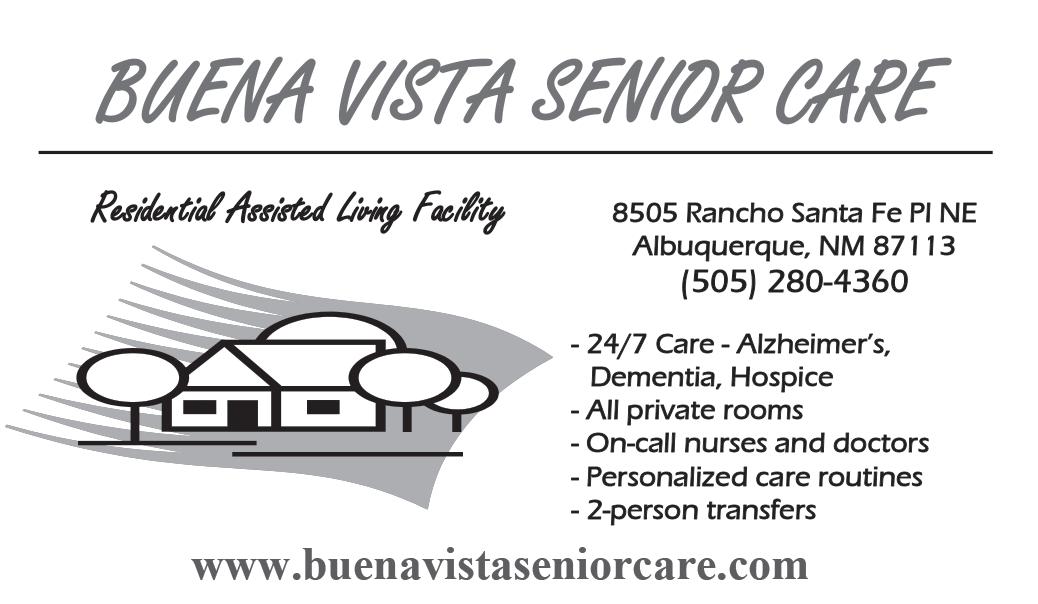
experience a full range of orthopedic services. sooner.
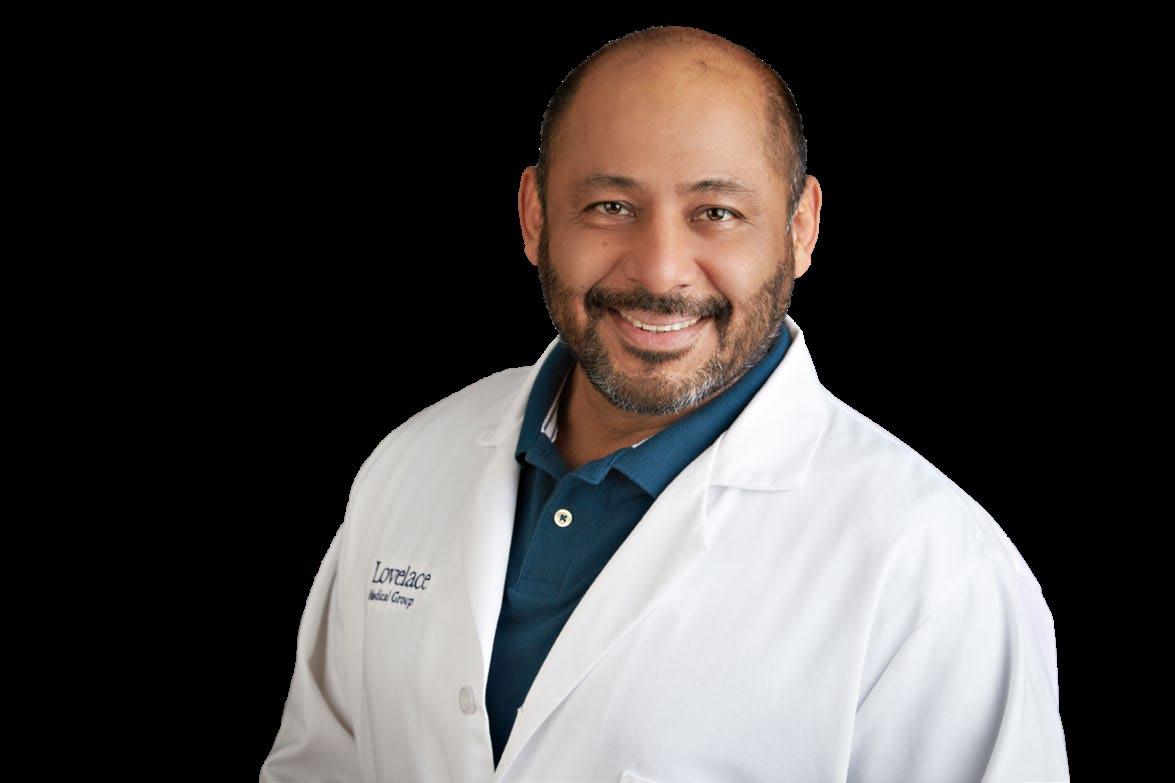
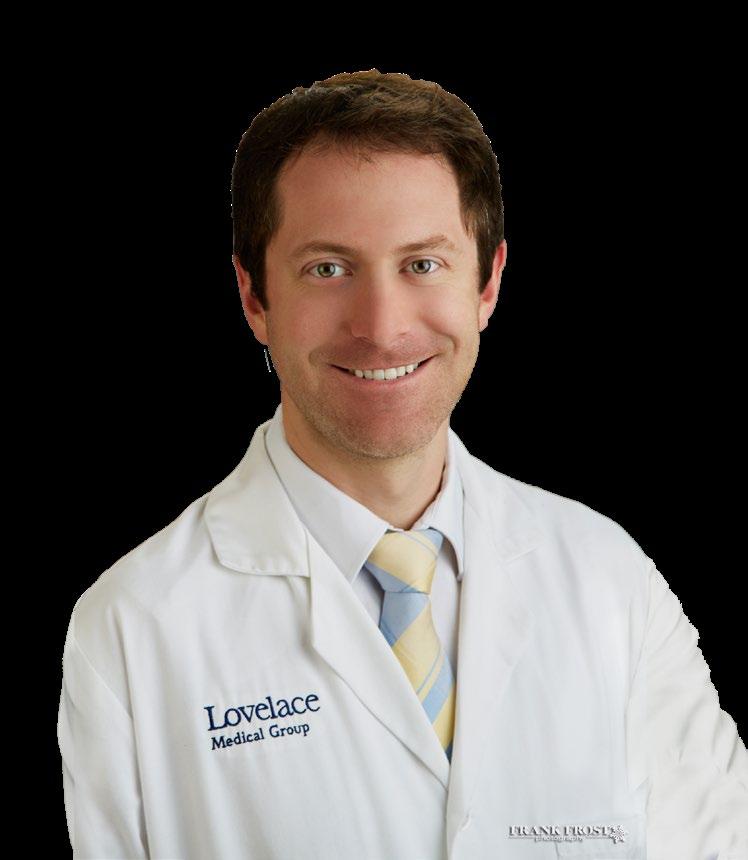
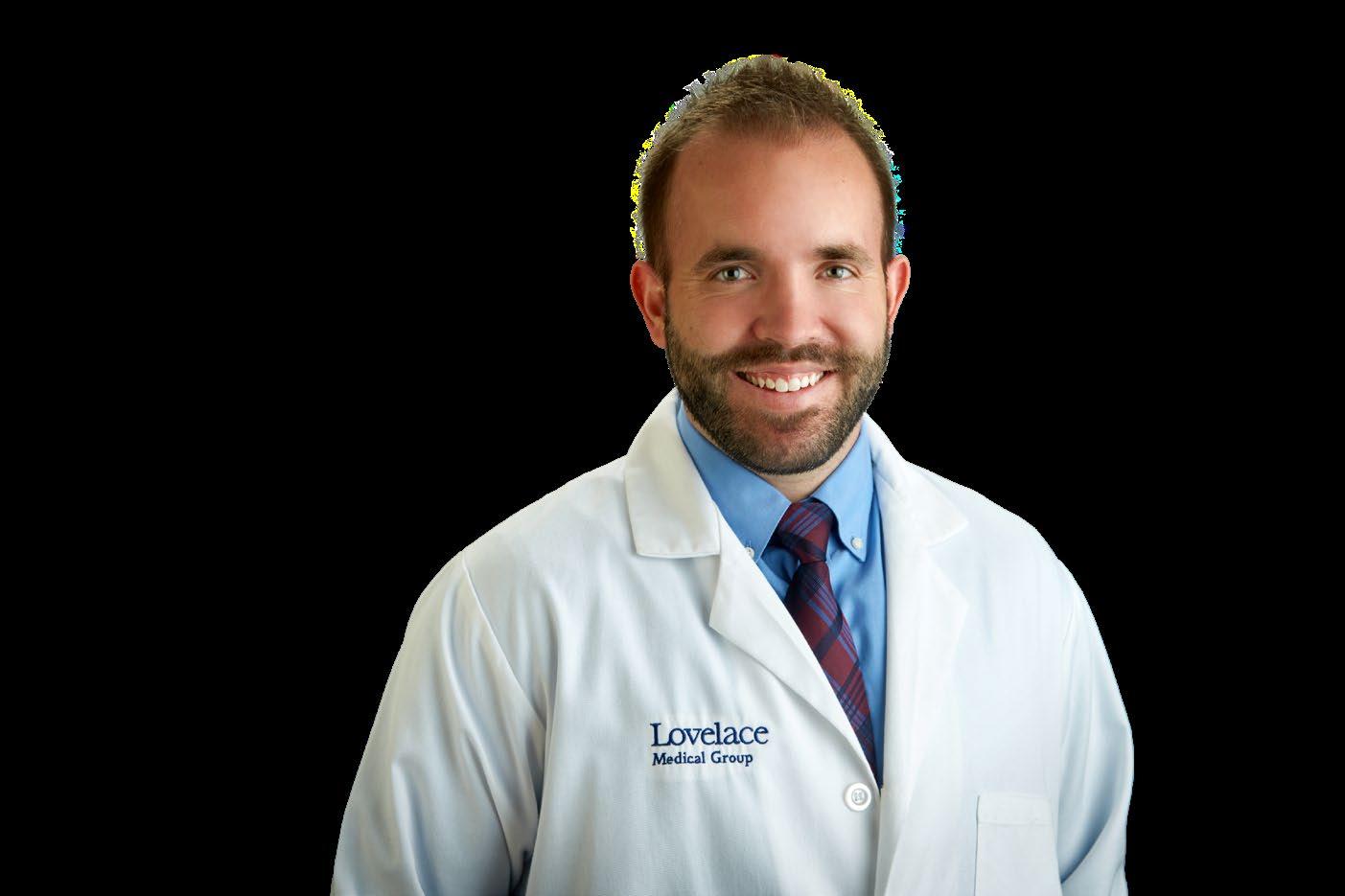
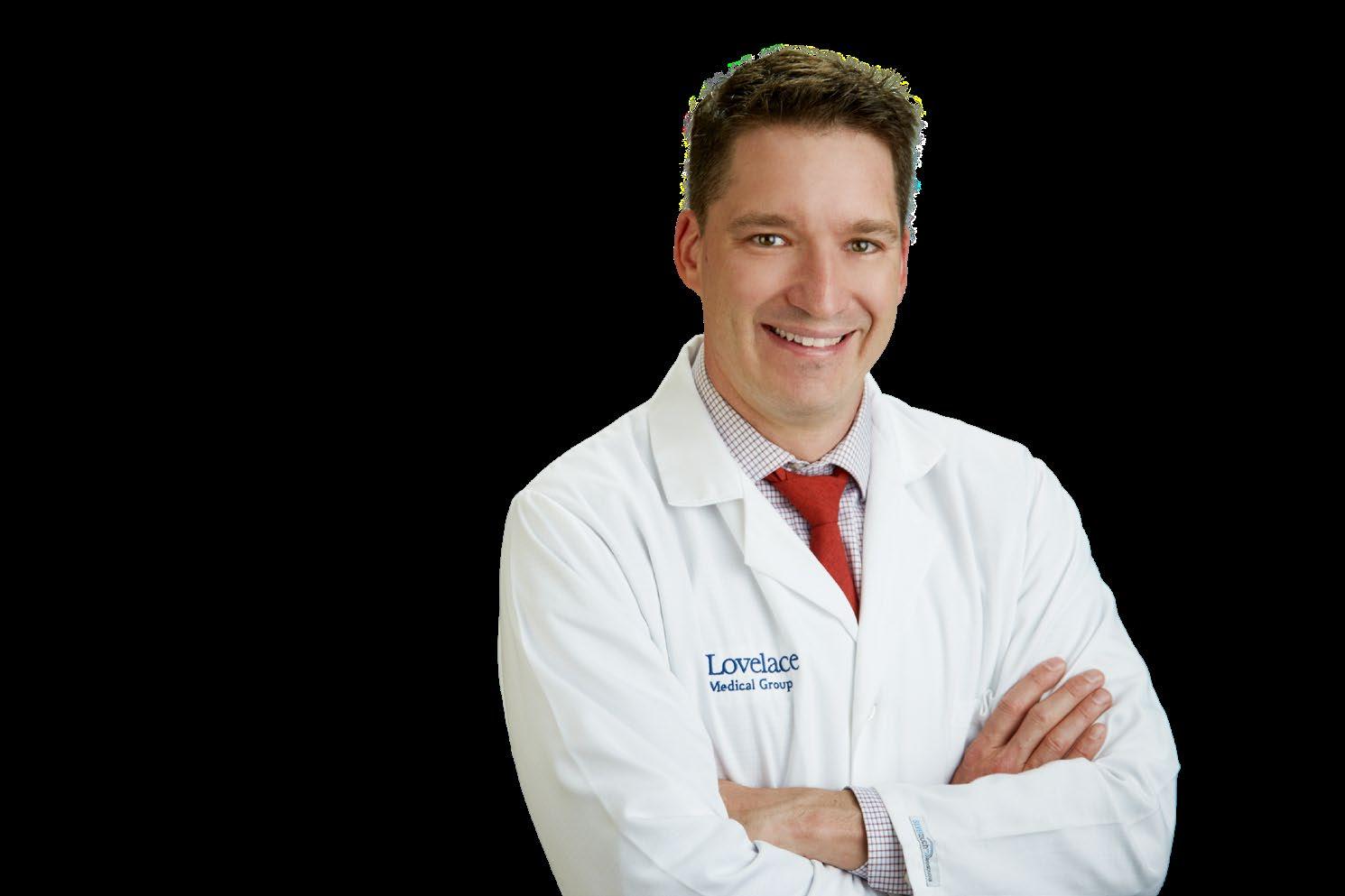

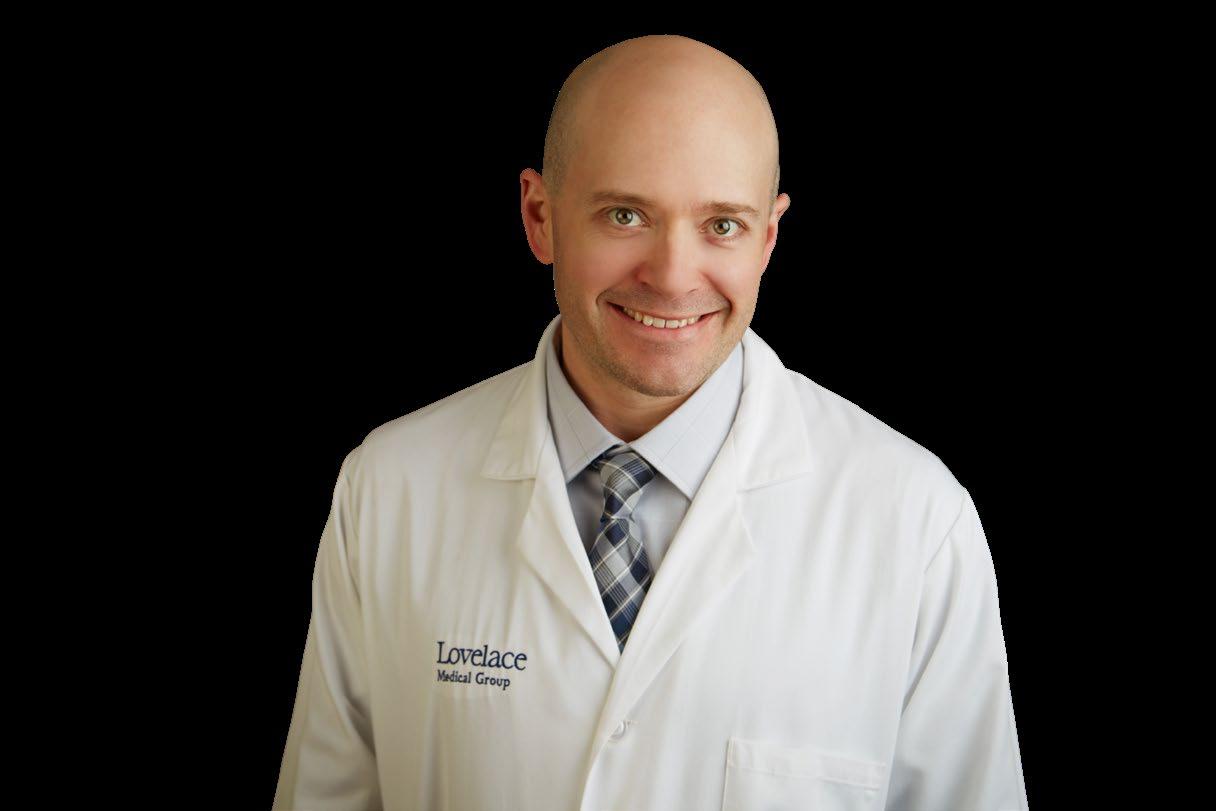


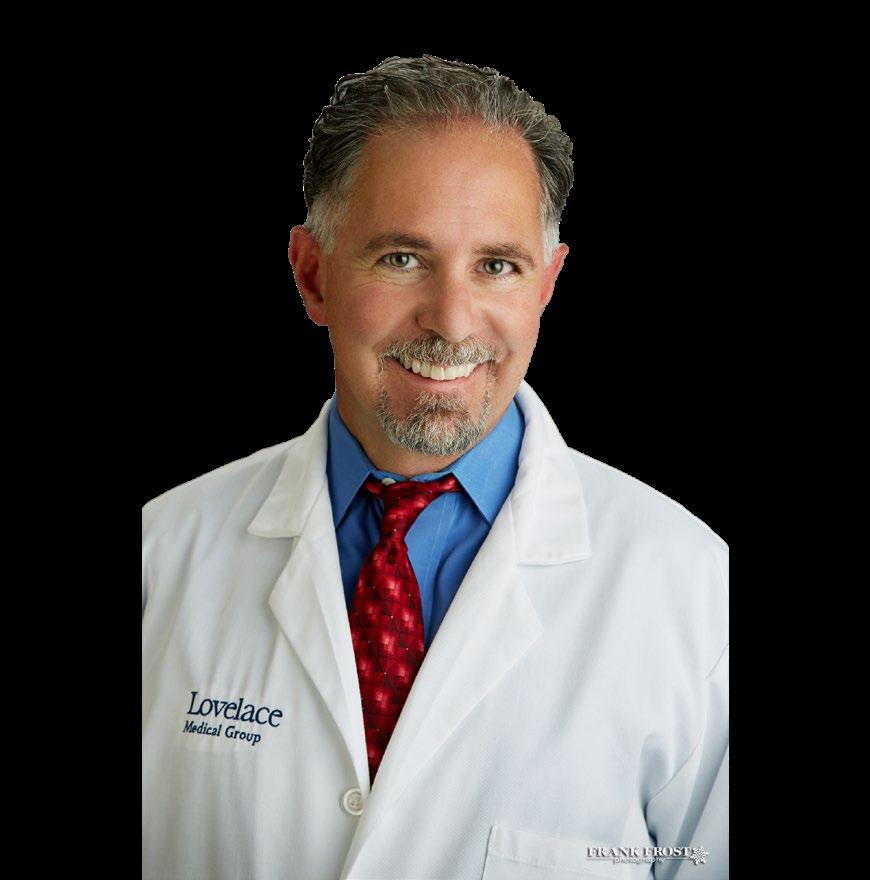
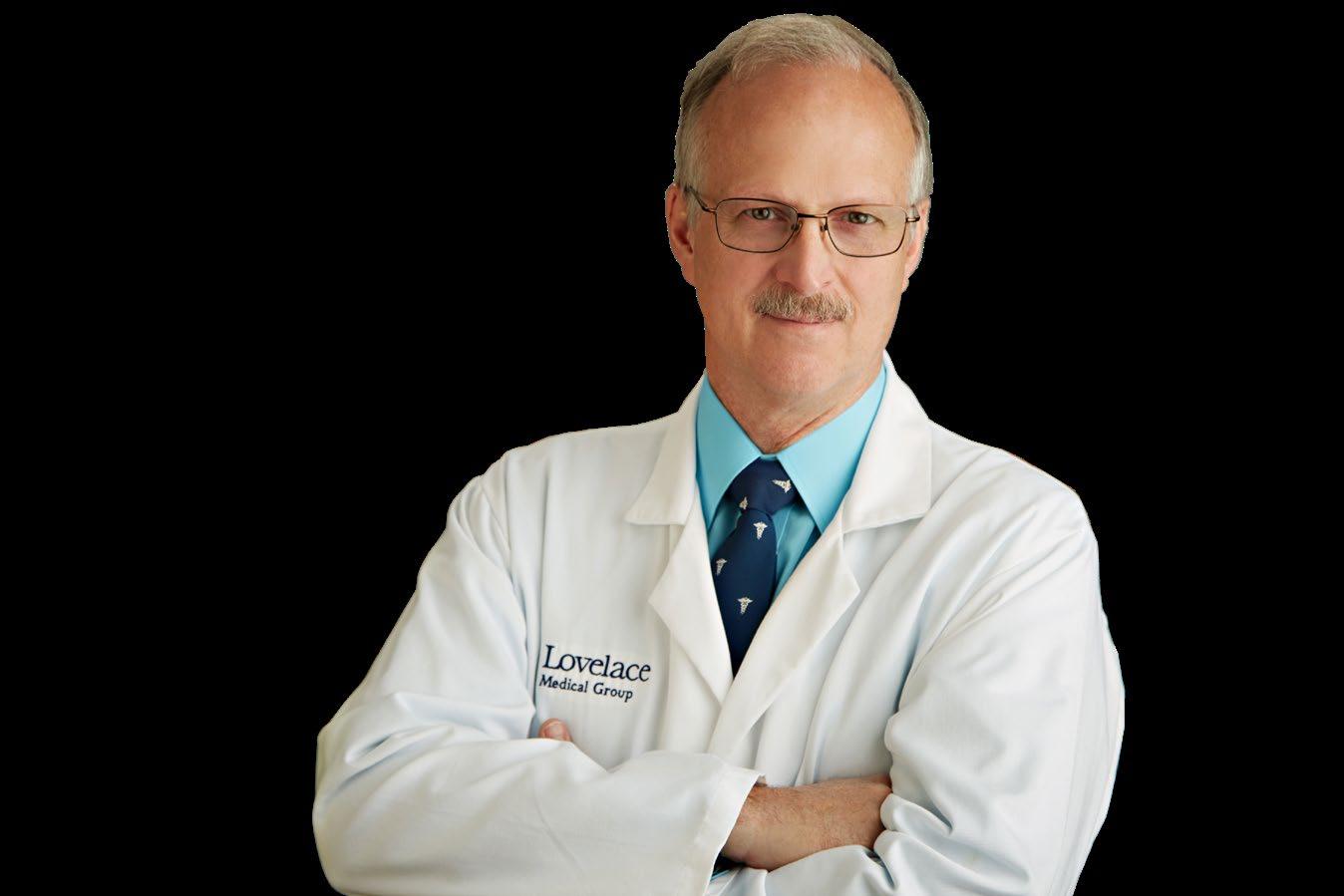


Jayce Powell, FNP
Orthopedic Nurse Practitioner
Vivek Agrawal, MD
Shoulder Specialist & Sports Medicine
Robert Martinez, FNP
Orthopedic Nurse Practitioner
Jay Wojcik, MD
Hip & Knee Specialist
Patrick Gilligan, MD
Hip & Knee Specialist
Kevin Regan, PA-C
Physician Assistant
Mark S. Anderson, MD
Hand Specialist
Christopher Hanosh, MD
Hip & Knee Specialist
Mark Werner, MD
General Orthopedics & Joint Specialist
More specialized orthopedic care means faster treatment for you. If you’re suffering from
hand, shoulder, hip or knee pain, the growing team of orthopedic specialists at Lovelace can help you with joint pain or sports injuries so you can enjoy life again. Sooner! Schedule your appointment today at 727.2727.

